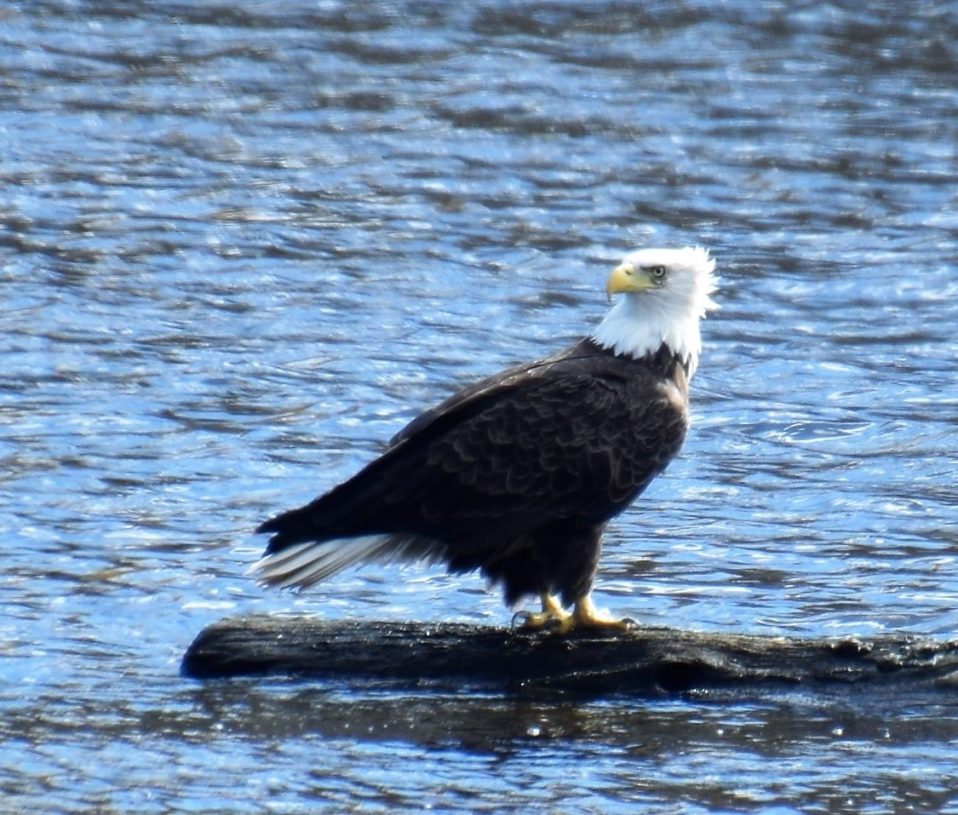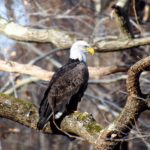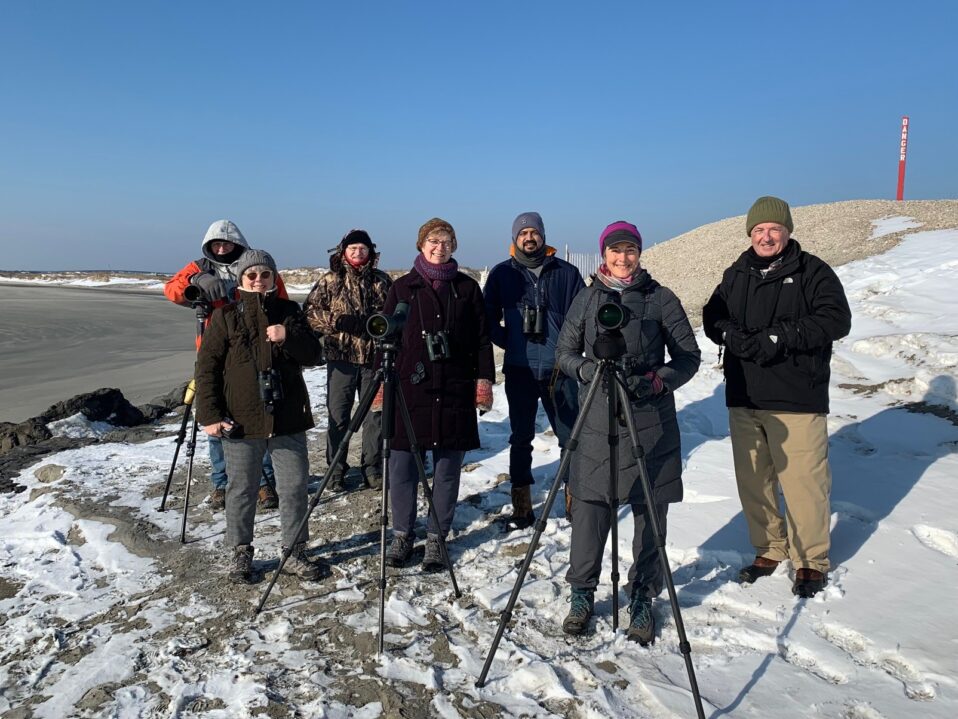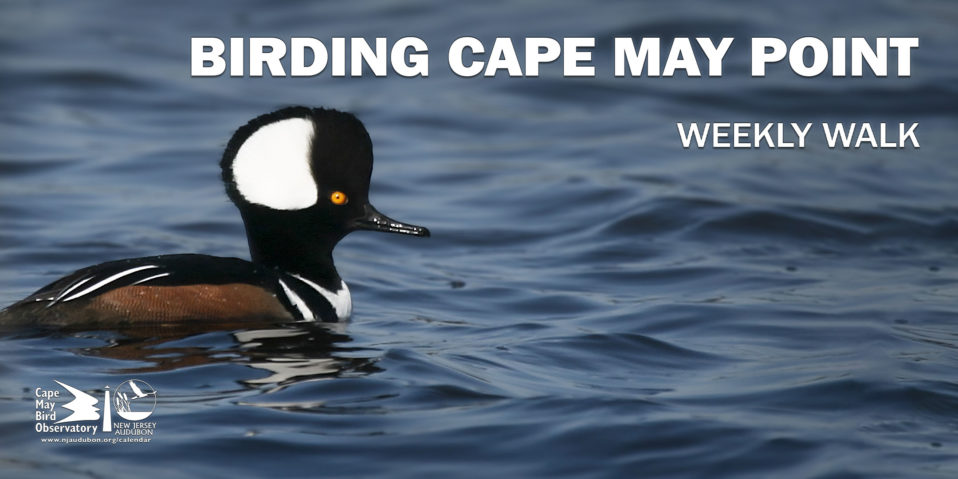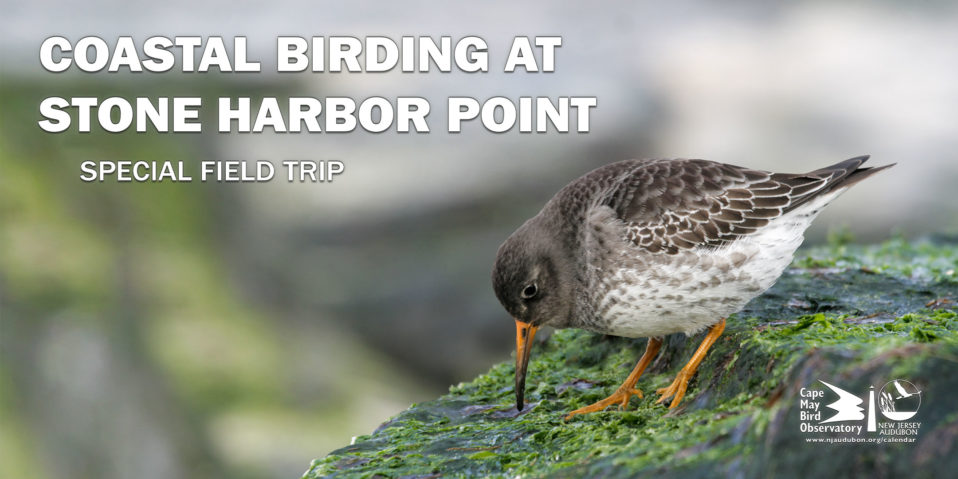Most of us in New Jersey are familiar with the story of the infamous bounce-back of the Bald Eagle: There was only one known Bald Eagle nest in New Jersey in 1973, now in 2019 the New Jersey Department of Environmental Protection states that there are 204 nests. We hear this information and, as conservationists we pat ourselves on the back. DDT was banned, the Clean Water Act was passed, and Bald Eagle populations rose. We did our education and outreach, we worked with land owners, we cleaned up waterways – we are doing great! Right?
Maybe not.
April 28, 2019 – Petty’s Island, Pennsauken Township
At 8:45 am on this cloudy morning I set out on a walk with 4 teens, their parents, and our leaders Emily Wilmoth, NJ Audubon Environmental Educator and Barb Basset, NJ Audubon Associate Naturalist (I was there for ballast and to learn). In the parking lot the eager youth (with great hearing and stellar vision) had already logged 27 species. As we entered the woods it got loud – birds were singing in all directions. We stopped at a set of kiosks so I could give the group a quick history of the island and explain miraculous transformation taking place. Slated for development in the early 2000s, the plan was turned on its head when CITGO staff found a Bald Eagle nest on the island. After much debate and litigation, the State of New Jersey accepted the island as a donation from CITGO upon its complete clean up (read more here). The Bald Eagle pair has relocated across the river and are known to be the first (and only) nest in Camden City. This nest has been successful for at least 8 years.
As we continue down the path Barb shouts: “Bald Eagle!” Where would your binoculars go? To the sky, right? As we are all looking up, confused, Barb then states: “No, on the ground, over there.” On the ground, 5 feet off the trail was a Bald Eagle. At first, we thought it was cool, and then we realized something was wrong. It wasn’t moving – it was just sitting, blinking, staring. This was not good.
Luckily, this Bald Eagle was found by 11 Helpful Humans; one of which, Ann Marie Morrison, was more than capable and willing to take the bird to Woodford Cedar Run Wildlife Refuge in Medford. There the bird was assessed and transferred to Mercer County where it is receiving treatment.
Later, I found out from Kathy Clark at NJ Department of Environmental Protection that the bird is suffering from lead poisoning. At time, I didn’t think much about it, but then I did some research. According to biologists at Rutgers University, no one knows how many birds are affected by lead poisoning. Some birds simply die while others survive and live an impaired life; perhaps never reproducing or having unsuccessful broods.
How did our Bald Eagle get sick? Where is the lead coming from? Although lead has been removed from gasoline and most paints, today’s sources include hunting ammunition, fishing tackle, household batteries, CFL bulbs, solder, abandoned smelters, old bridge paints, and car batteries. In this area of New Jersey, the bird could have come into contact with animals contaminated with scrapings of old house paint, fragments of lead shot, lead fishing sinkers or shavings of scrap metal. Urban soils are also littered with lead—deposited there by centuries of human activity—that pose a health risk to people as well.
So, what can we do about lead in our environment? If you hunt or fish choose alternatives to lead shot and lead sinkers. If you have an older house test the paint before you scrape and hire a professional to properly abate the lead. Make sure to take old car batteries and scrap metal to a proper disposal facility – even if it means paying for disposal.
Signs of lead poisoning include:
• Weakness
• Loss of coordination
• Blindness
• Seizures
• Involuntary eye movement
• Head tilt
• Clenched toes
• Drooping wings
• Closed eyelids
• Tremors
• Instability
• Vomiting or diarrhea
• Green staining on feathers
What to do if you suspect a bird is injured or has lead poisoning:
1. Remain calm and assess where you are and what resources you have available to you. How remote are you? Do you have a blanket or large towel on hand? Do you have a box or bin large enough for the bird?
2. Call a bird rehabilitation center.
- Woodford Cedar Run Wildlife Refuge, 6 Sawmill Rd., Medford, NJ – 856-983-3329
- Mercer County Wildlife Center, 1748 River Rd. (Rt. 29), Titusville, NJ – 609-303-0552
- The Raptor Trust, 1390 White Bridge Rd., Millington, NJ – 908-647-2353
- Toms River Avian Care, 1916 Kenilworth Ct., Toms River, NJ – 732-255-9270
- Avian Wildlife Center, 146 Neilson Rd., Wantage, NJ – 973-702-1957
3. Follow their lead. If you are comfortable capturing and transporting the bird as per their instruction do so. If you are not, the rehabilitation center will take the lead.
Together we can make New Jersey a better place for people and wildlife.
Kelly Wenzel, MCRP
Interim Administrative Director – Lorrimer Sanctuary
Project Director – Urban Education and Outreach
Bald Eagle Photo: Chris Neff




